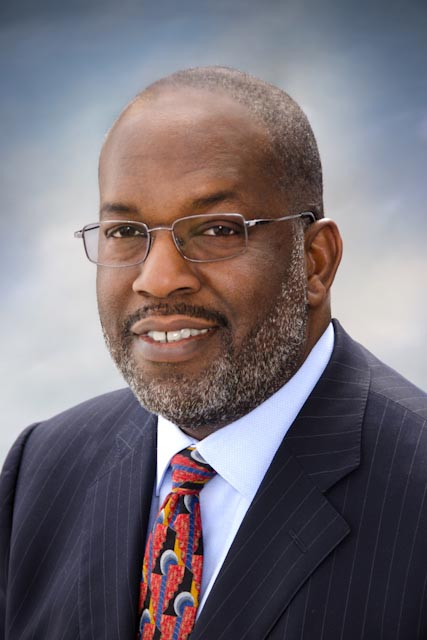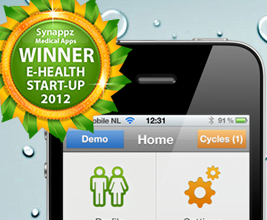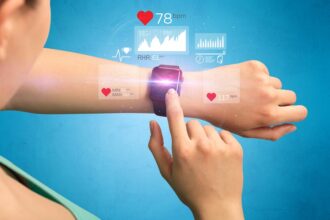A Go-To Health Care System for Innovation and Digital Technology
A Go-To Health Care System for Innovation and Digital Technology
“It’s something our members wanted, they have it and they love it,” said Kaiser Permanente’s Incoming Chairman and Chief Executive Officer, Bernard J. Tyson, in a recent telephone interview. The “it” Mr. Tyson is referring to is the digital technology that allows Kaiser Permanente members to email their physicians. To date, there are “14 million e-visits,” he said, and members gain access via a free Smartphone mobile app.
This digital technology builds relationships with physicians, Mr. Tyson said. The mobile app model allows patients to build a relationship with their physician, establish that relationship and then it’s driven by the members working with his/her physicians through online technology, he added. Members email their physicians with questions; they can make appointments and access lab results. It’s driven from members perspectives. “I did three e-visits with questions for my physician.” The e-visit allowed me to have direct interaction with my physician, he said. And, if I needed to see my physician, I’d make an appointment online.
Privacy and security
Protecting patients’ information in a digital world is paramount. Privacy is a concern and when asked if there have been any issues with privacy and security, Mr. Tyson said, “No.”
The biggest area of focus is making sure it’s encrypted, secure and password coded, he said. Patient confidentiality is a concern and we make sure records are secure, he added. We have additional security for screening. “There’s an electronic fingerprint, so we always know who accessed the record.” He added, “The whole issue of patient confidentiality is from the public perspective, making sure their records are secure, and only used by authorized personnel. At Kaiser Permanente, we take patient privacy and security very seriously, so much so, we make sure our records remain as secure as humanly possible.”
Biggest challenge of digital technology
Digital technology is transforming health care and patients are accessing their doctors digitally. The biggest challenge of digital technology (e-visits), said Mr. Tyson, is that Kaiser Permanente’s physicians are already putting in full days. “Now our physicians are working ten, twelve hour days, and then they go home and they may work another couple hours to catch up on emails.” There’s an increase in demand, but that’s a challenge, not a drawback, he said. “It’s an opportunity for technology that is readily available.” There are no incentives for physicians to email their patients, all physicians at Kaiser Permanente participate and engage with patients via e-visits. Roughly 4.2 million of the more than 9.1 million Kaiser Permanente members are registered with KP HealthConnect™, and 32 million lab results have been viewed online, according to Mr. Tyson. There have been 118 million visits to KP.org and over 12 million prescriptions have been filled via securely online using Kaiser Permanente’s electronic medical record technology.
Emailing with physicians may prevent an unnecessary visit so patients “love it,” said Tyson, “This is part of Kaiser Permanente’s connected care.
Telehealth
Since members are already emailing their physicians, the next natural progression is to move to telehealth, said Mr. Tyson.
“Here at Kaiser Permanente we have already delved into the telehealth world. Due to our unique delivery system, we can actually deliver care in home settings and outpatient medical facilities.” For example, “we may have a specialist on the east coast and a patient on the west coast who has a rare disease that we want the east coast specialist to take a look at; we can now make it happen via telehealth technology.” We have the capability of using telehealth around dermatology too, he said. “With the precision of high definition, it’s incredible what we’re able to do with telehealth.”
Physicians want to maintain visual contact with the patient, but that doesn’t necessarily mean the patient needs to come in for a doctor’s visit each and every time.
Concept to Design
Kaiser Permanente is at the cutting edge of innovation and technology. At their “innovation warehouse” known as The Sidney R. Garfield Health Care Innovation Center, they conceptualize ideas and design a plan. It’s their living laboratory. Tyson says it’s like an old James Bond movie where they have a innovative site with gadgets similar to OO7. At the Garfield Innovation Center, they brainstorm around care delivery and they build working modules inside the center, it’s a place to design the future of health care. “Kaiser Permanente has a history of being on the cutting-edge in terms of innovation and technology,” Mr. Tyson said. “This technology has been an enabler.” He playfully spoke about watching robotic surgery at the West LA Kaiser Permanente facility, saying it looked like he was watching a “gameboy.”
Designing the medical home of the future is being tackled at Kaiser Permanente’s Sidney R. Garfield Health Care Innovation Center.
Tyson talked about an interactive refrigerator. When you touch the refrigerator it tells you your calorie count, what’s in there, and what you should be eating, he said. It provides you with information to help you make smart choices in life. “It provides an incredible opportunity to provide health information.” You may take a tour of the Sidney R. Garfield Health Care Innovation Center here.
Mobile App Trends
The very first question I asked Bernard Tyson dealt with mobile apps. I asked him if physicians are prescribing health apps to their patients. “It depends on the population they’re caring for,” he said. “I believe strongly that when physicians and other caregivers continue to think about how to add value to a person who’s seeking to remain healthy; they ‘re going to be looking for tools and techniques that allow the person to self-direct their care when they are not in the direct care of their physician.” Investors are putting a lot of money into this. Things like Fitbit®, Jawbone and gadgets for walking, sleeping and exercise; this will be a trend in mobile technology, Tyson said. (More on Kaiser Permanente’s launch of an open API called Interchange in a future post. Interchange allows app developers to use Kaiser Permanente’s publicly available information for their own use.)
Future
“In the future, you’ll see how technology will support people with chronic diseases,” Tyson added. For patients with complex demands there will be medication management, appointment management and reminders for patients to take their pills.
“This is a great opportunity for the health care industry,” said Tyson. “It’s very fragmented as an industry.”
Technology will allow these health care silos to come together and make way for integration and coordination among all aspects of the health care industry, said Tyson.
I loved speaking with Bernard Tyson. His energy and enthusiasm for technology is evident. Having leaders at the helm who take the leap because they know it’s the “now” and not the “someday” approach is what creates positive change. “At Kaiser Permanente it’s “not the, we wish, we believe, it’ll be happening; we’re doing it at Kaiser Permanente,” said Tyson. “The future is here,” he added.
Kaiser Permanente’s vision: “How to help a person live a healthy life, not to just keep coming to Kaiser Permanente,” said Mr. Tyson.
Transforming health care begins with leaders ready to take a risk, jump the curve and plunge into new ideas to create a better and healthier life.
Reviewed and Revised by Kaiser Permanente 6/6/13
–
–










